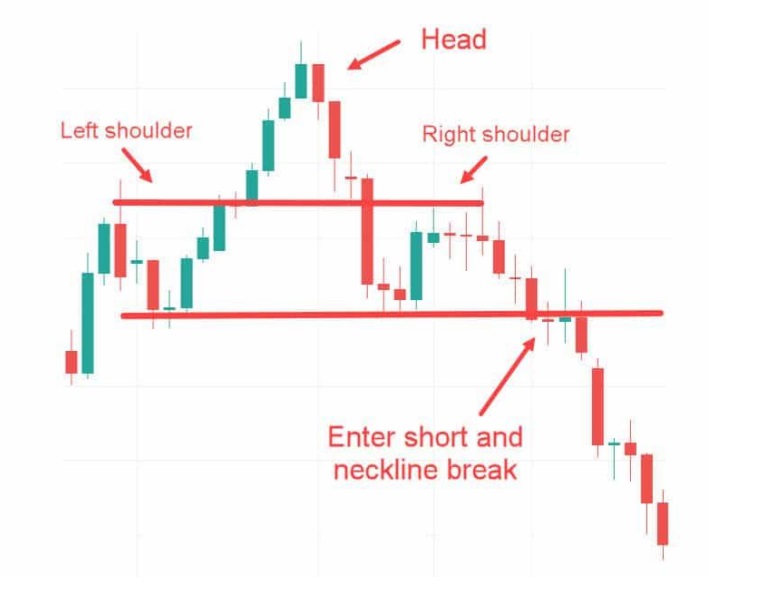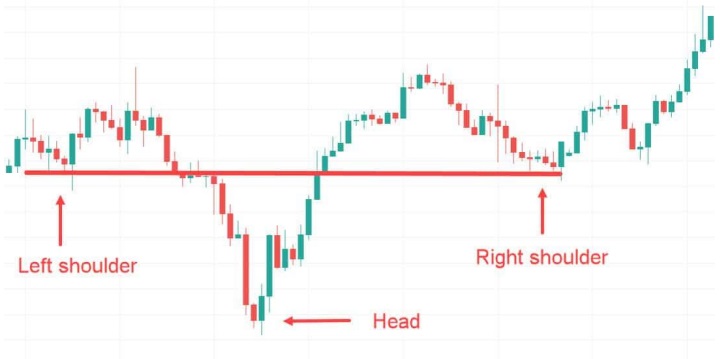Despite being a rare occurrence, the head and shoulders pattern can offer traders very precise trade chances. This pattern can be used to spot potential reversal trades and is typically seen on higher time frames. In this essay, we will examine the head and shoulders pattern’s theoretical underpinnings and practical trading applications.
Table of Contents
- Introduction to the Head and Shoulders Pattern
- Identifying the Head and Shoulders Pattern
- Trading Strategies for the Head and Shoulders Pattern
- Price Targets for the Head and Shoulders Pattern
- The Inverse Head and Shoulders Pattern
- Conclusion
Introduction to the Head and Shoulders Pattern
The head and shoulders chart pattern is well known for its dependability and trading success. Although it doesn’t happen often, this pattern can be traded on all time frames and in the majority of markets. When this pattern is seen in the financial markets, it may be an indication that a fresh downward trend in the price is about to begin. This pattern gives traders information on where to set their stop loss and profit targets as well as trading opportunities.
The head and shoulders design is one thing, but the inverted head and shoulders pattern is another. It suggests that a new upward increase in the price may be about to occur.
Identifying the Head and Shoulders Pattern
The three distinct peaks that set the head and shoulders pattern apart are used by traders to recognize it. The following components make up this pattern:
- The cost initially starts to increase.
- The price then develops three peaks: the center right shoulder, the head, and the left shoulder.
- The pattern is completed by the neckline, and this is where traders frequently attempt to start short transactions.
An illustration of the head and shoulders pattern can be seen in the chart below. The initial resistance point appears as the price first develops a left shoulder. The price then moves above the left shoulder to form the head. Finally, once the price encounters the second resistance level, which frequently occurs close to where the left shoulder encountered resistance, the right shoulder forms.


Trading Strategies for the Head and Shoulders Pattern
You will find trading to be simple once you have mastered recognizing the head and shoulders pattern. Once the pattern is confirmed and the price breaks below the neckline, a short trade is typically the most popular approach to trade this pattern.
You can see that the price has shaped into a head and shoulders pattern with a distinct neckline support region in the chart below. When the price breaks through this neckline support region, the pattern is confirmed. Waiting until the neckline breaks and then looking for short enters is the simplest way to trade the head and shoulders pattern.
Depending on their trading strategy, traders can use one of two stop-loss kinds. Placing stops above the pattern’s “head” is the first, less aggressive option. The second, more aggressive stop-loss strategy, on the other hand, includes setting stops immediately above the pattern’s right shoulder. In this approach, the trader is stopped out and the pattern is considered to have failed if the price rises and breaks above the right shoulder’s highs.


Price Targets for the Head and Shoulders Pattern
Calculating the difference between the head and either shoulder’s low point is the most typical approach to setting profit targets using the head and shoulders pattern. To do this, measure the height of the head and the width of the shoulders in pip units. The profit goal is then set to be the same amount of pips from the neckline breakout once this has been decided.
For instance, the trader would anticipate a price decline of 150 pip through the neckline if the distance between the high of the head and the low of the shoulders is 150 pip.
The next support level can be found by using this pattern to determine profit goals. This strategy is less aggressive, but traders must have outstanding technical analysis abilities to spot profitable locations.
The Inverse Head and Shoulders Pattern
The head and shoulders pattern’s opponent, the inverted head and shoulders pattern, shares many of the same fundamental characteristics. The shoulders and head form in the opposite direction in this pattern. The inverse head and shoulders pattern shows a potential rise higher while the head and shoulders pattern indicates a potential move lower.
You can see that the price has formed two shoulders and a head in the chart below, in contrast to the typical head and shoulders pattern. The neckline is now acting as resistance, and the price needs to rise above this neckline resistance area in order for this pattern to be confirmed.


Conclusion
A high probability pattern that can be traded on almost all markets is the head and shoulders pattern. Although a lot of traders favor employing this pattern on higher time frames, such the daily or weekly time frame, it may be used on any time frame that works for a trader’s style.
Before using it in actual trades, it is crucial to test any new pattern or approach on a practice or simulated account. The head and shoulders pattern can be incorporated into a trader’s trading strategy if they feel comfortable with it, which may allow them to take advantage of its dependability and profitability.

